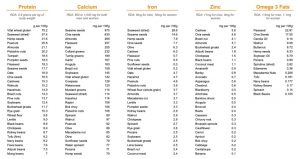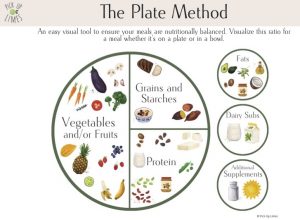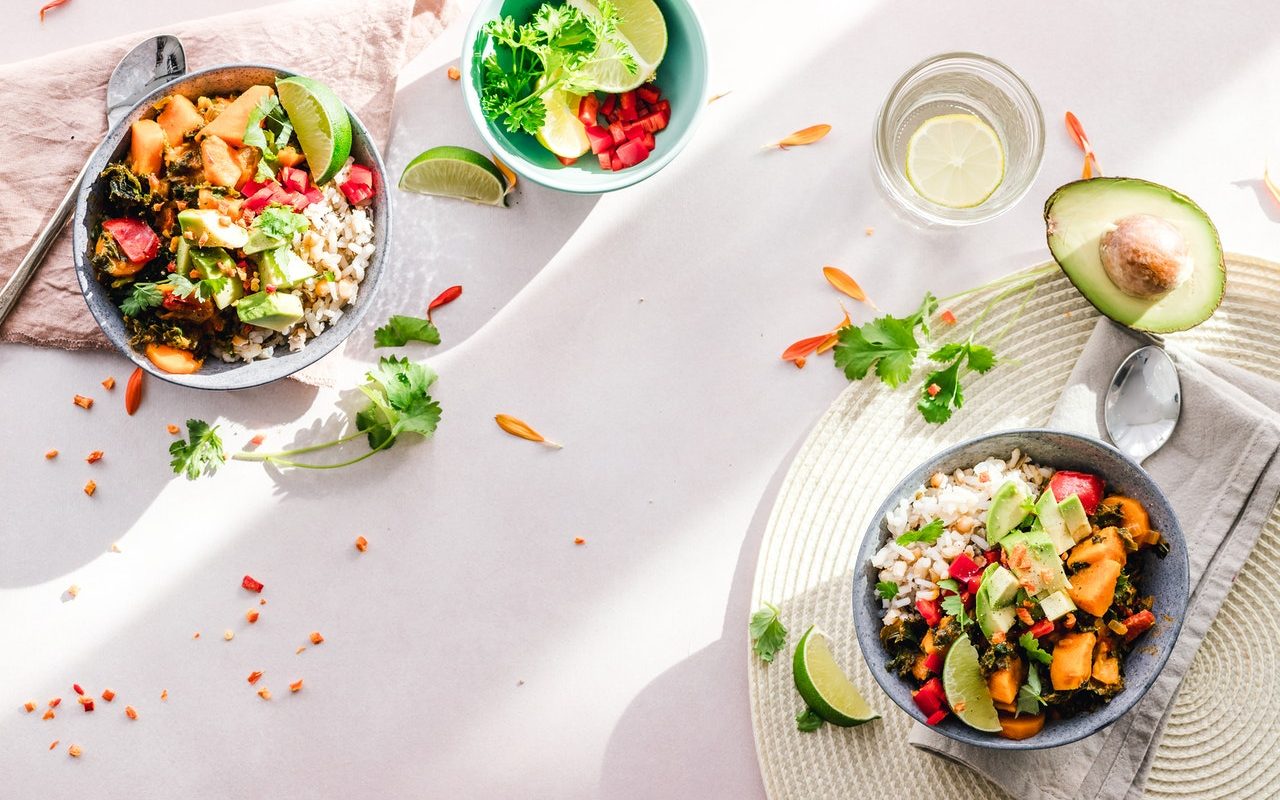Hello everyone, today’s post will be a starter guide to vegan nutrition for those who just started or want to adopt a vegan diet.
When applied correctly, this diet can provide many health benefits; however, a plant-based diet can also increase the risk of nutrient deficiencies in some cases. Therefore, it’s crucial to know the plant-based food sources you need in a well-planned and balanced vegan diet.
The Vegan Nutrition Chart
Here’s a chart showing the plant-based food sources for different nutrients, which are essential to get in a vegan diet.

Source: VegFAQs
How Should You Plan Your Meals – the plate method
https://www.youtube.com/watch?v=M8GhWgy5g_8

Source: Pick Up Limes
Vegan Diet Types
There are many types of vegan diets, so you should do your research and try out different types to find the one that works best for you. However, everybody can meet their needs and preferences on a purely plant-based diet. Below I share the most common ones. (For more vegan diet types, see Nutriciously)
The whole-food vegan diet
It is based on a broad range of whole plant foods suchlike vegetables, fruits, whole grains, legumes, nuts, and seeds.
The raw-food vegan diet
It is based on raw fruits, vegetables, nuts, seeds, or plant foods cooked at temperatures below 48°C.
80/10/10
It is a raw-food vegan diet limiting fat-rich plants such as nuts and avocados. Instead, it relies mainly on raw fruits and soft greens. Also known as the low-fat, raw-food vegan diet or fruitarian diet.
The starch solution
It is also a low-fat, high-carb vegan diet but focuses on cooked starches like pasta, potatoes, rice, and corn instead of fruit.
Raw till 4
It is a low-fat vegan diet, in which raw foods are consumed until 4 p.m., with the option of cooked plant foods for dinner.
The thrive diet
It is a raw-food vegan diet in which plant-based and whole foods are consumed raw or minimally cooked at low temperatures.
The junk-food vegan diet
It is a vegan diet that eliminates whole plant foods and relies heavily on processed vegan foods like mock meats and cheeses, fries, vegan desserts, etc.
Tips for Vegan Dining Out
- Dining out on a vegan diet can be difficult. Therefore, you can check the menu online in advance to see what vegan options are available for you. Sometimes, advance notice can help the chef arrange something for you.
- Don’t hesitate to question if your meal is prepped just how you want it. Also, sometimes restaurants keep their vegan dishes off-menu, so it’s worth asking about available options.
- When in doubt, you can go with Mexican, Thai, Middle Eastern, Ethiopian, and Indian restaurants. They can be naturally vegan-friendly or have foods that can easily be replaced by vegan options.
To Summarize
If applied accurately, a vegan diet can be easy to follow and provide various health benefits. However, as with any diet, you can benefit from it only when you are consistent. If you cannot meet your daily nutritional needs through a vegan diet alone, you should consider using supplements. Otherwise, this can cause other deficiencies and problems in your body. Also, it is recommended to get advice from a doctor on how much of which supplements you should take.



Wow really loved this helpful guide, especially going further than macronutrients like protein and also including micronutrients like calcium and others!
Thank you Azim, I am glad that you find the guide helpful! 🙂
Thank you for this post! As usual, it is very clearly structured and has lots of insights! No doubts now that the vegan diet has sources for different nutrients!
Thank you, Sofia! 🙂